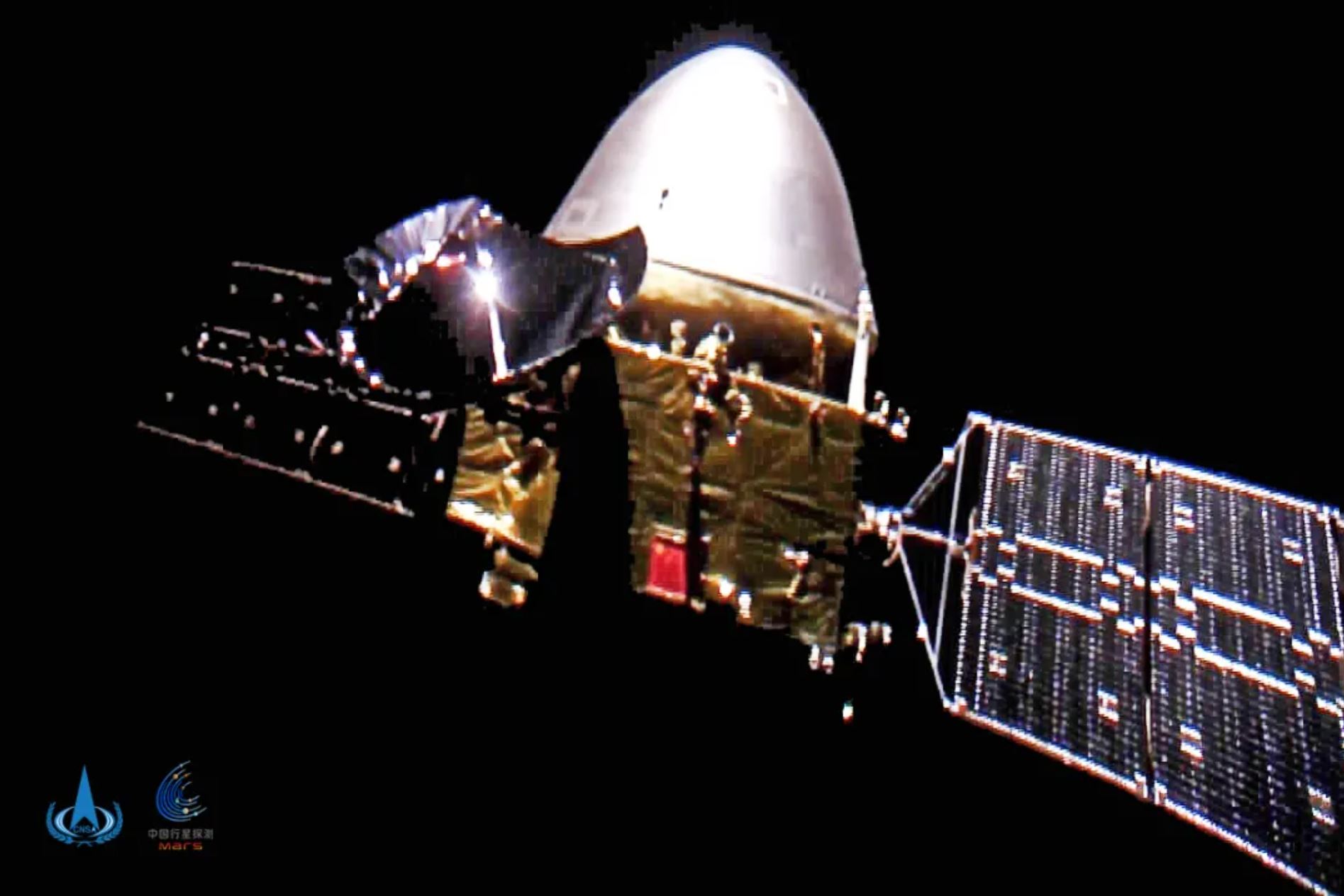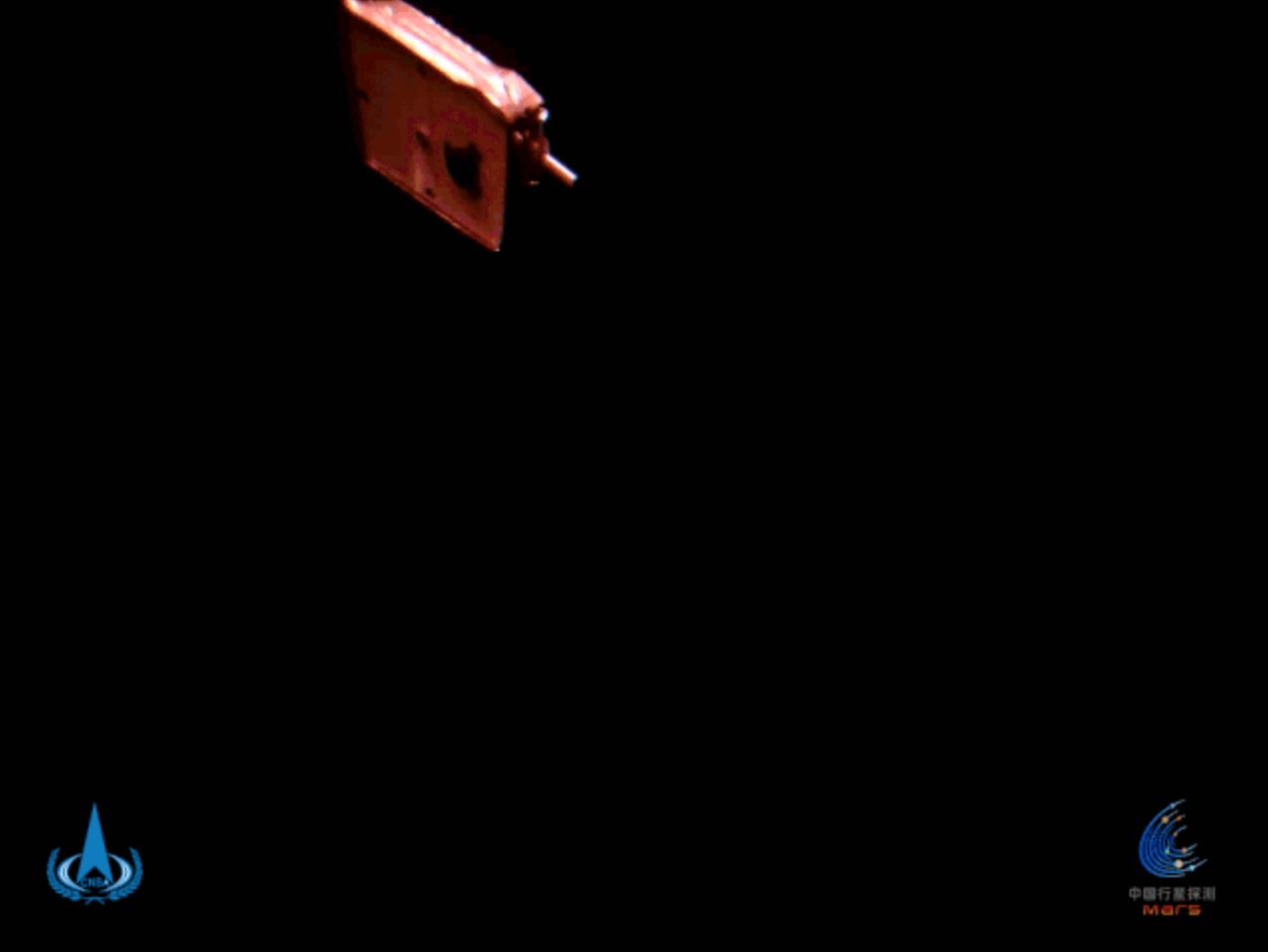China's Tianwen-1 Mars probe snaps epic deep-space selfie (photos)
See Tianwen-1 nearly 15 million miles from Earth!
China's Tianwen-1 spacecraft has beamed home some deep-space selfies snapped by a small camera jettisoned during its journey to Mars.
A small camera with wide-angle lenses on both sides was ejected from the outside of the spacecraft in the depths of outer space. The small camera took one image every second and sent the data to Tianwen-1, which then transmitted the images to Earth.
One image shows the gold, hexagonal body of the Tianwen-1 Mars orbiter, two silver solar arrays and the conical aeroshell containing the mission rover, all against the blackness of deep space; A second image provides a more distant view of the spacecraft. Tianwen-1 is an ambitious mission that includes an orbiter as well as China's first Mars lander and rover.
Tianwen-1 also took images of the jettisoned camera as it tumbled away from the main spacecraft.
Related: Here's what China's Tianwen-1 Mars mission will do
The China National Space Administration released the new images on Oct. 1 to mark the country's national day.
On Friday at 15:00 UTC Tianwen-1 also completed a deep space maneuver. The spacecraft’s main engine fired for over 480 seconds to adjust the spacecraft’s orbit and trajectory.
Breaking space news, the latest updates on rocket launches, skywatching events and more!
Chen Lidan, a chief designer of Mars Mission Control Team, told CCTV that the maneuver adjusted the orbital inclination of Tianwen-1 from 1 degree to 1.8 degrees to match that of Mars.
Tianwen-1 was 18.3 million miles (29.4 million kilometers) from the Earth on Friday, having covered a total flight distance of 116.8 million miles (188 million km).
Related: The latest news about China's space program
Tianwen-1 had previously performed two smaller trajectory correction maneuvers on its journey to Mars, with the second carried out on Sept. 20. Mission managers have tested the spacecraft's instruments during the flight and deemed them healthy.
Tianwen-1 launched on July 23 from Wenchang on a Long March 5 rocket. The spacecraft will arrive at Mars in February and enter orbit around the planet. The rover landing attempt will take place around April.
The six-wheeled, solar-powered rover is designed to operate on the surface for 90 Martian days (93 Earth days). The orbiter, which carries seven science payloads, is expected to carry out its own investigations for one Martian year, or two Earth years, while also acting as a communications relay between the rover and Earth.
Follow us on Twitter @Spacedotcom and on Facebook.

Andrew is a freelance space journalist with a focus on reporting on China's rapidly growing space sector. He began writing for Space.com in 2019 and writes for SpaceNews, IEEE Spectrum, National Geographic, Sky & Telescope, New Scientist and others. Andrew first caught the space bug when, as a youngster, he saw Voyager images of other worlds in our solar system for the first time. Away from space, Andrew enjoys trail running in the forests of Finland. You can follow him on Twitter @AJ_FI.




